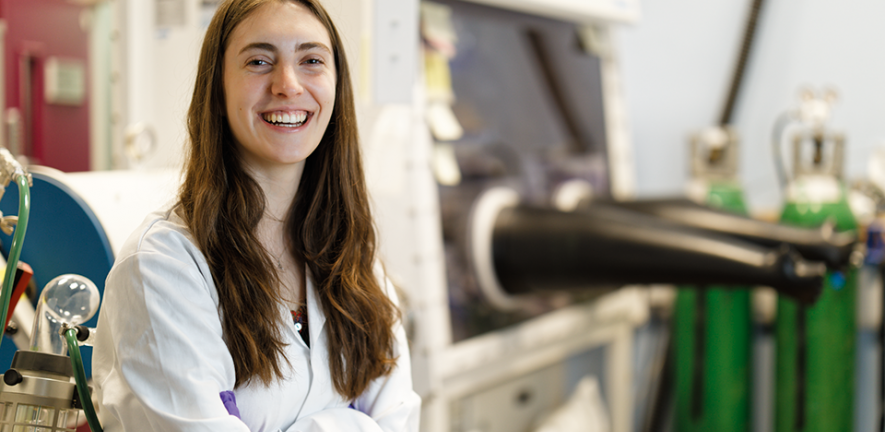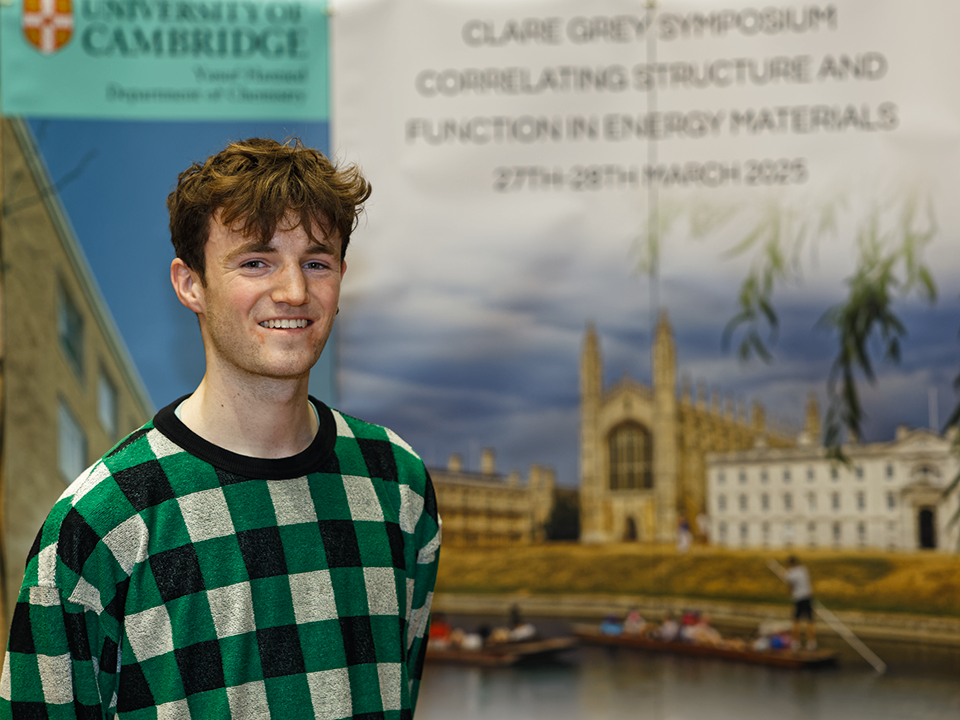
Last year, our Department hosted three FUSE interns where they joined groups to experience real laboratories and research alongside supervisors. This valuable opportunity has helped previous FUSE interns continue their research journeys.
Clara Morgan
Supervised by Prof. Dame Clare Grey and Dr Debashis Tripathy. Clara Morgan, a third-year student on the Master’s degree in Chemistry at the University of York, completed an internship with the Grey Group at the University of Cambridge.
During this placement, she worked on a project titled “Performance and Ageing Evaluation of Li-ion Batteries with Novel Formulations.” The project aimed to understand how lithium-ion battery materials degrade over time and how performance can be improved for more reliable, longer-lasting energy storage. Her findings were presented in a scientific poster at the end of the eight-week placement.
Clara focused on evaluating different electrode materials, exploring how slight changes in composition and cycling conditions affected battery performance. She investigated the effects of high charging rates (2C, 3C), which led to faster degradation compared to the standard 1C rate. Some materials demonstrated better capacity retention over time, offering promising implications for real-world applications such as electric vehicles and grid storage.
Her interest in materials chemistry – particularly the relationship between structure, composition and function – was deepened through the project. The experience reinforced her passion for using chemistry to address sustainability challenges and develop advanced energy technologies.
Clara gained practical experience in glovebox operation, coin cell assembly and battery cycling using BioLogic and Arbin systems. She also observed X-ray photoelectron spectroscopy (XPS) and conducted gas analysis. Her scientific writing skills were enhanced through the development of her research poster. She became proficient in OriginLab and EC-Lab software for electrochemical data analysis.
The internship confirmed Clara’s desire to pursue a career in battery research and will directly support her upcoming industrial placement with a company connected to the Faraday Institution. Originally from Cambridge, she attended Sawston Village College and Hills Road Sixth Form College. This opportunity offered her a new perspective on University life in her home city and a chance to collaborate with fellow interns and researchers in a highly inspiring environment.

Cassidy Ashworth
Supervised by Prof. Dame Clare Grey and Dr Hrishit Banarjee. Masters in physics at the University of Cambridge.
Cassidy focused primarily on computational and theoretical physics during his Bachelor’s degree, with a particular interest in the physics of materials. His in-depth literature review on solid-state batteries provided an excellent foundation for his research placement through the FUSE internship programme.
During his internship, Cassidy worked with both the Grey Group in our department and the Banerjee Research Group in Dundee, developing computer models to simulate how X-rays travel through different lithium-ion battery cathodes. Just as X-rays are used in medicine to image bones, they can also be used to examine the internal structure of batteries. In this case, the focus was on the cathode – the component responsible for storing and releasing charge. He investigated cathodes made from varying proportions of lithium, manganese and phosphate, predicting how their structure influences battery life and performance. These predictions are crucial in helping researchers design future batteries that charge more quickly, last longer and operate more efficiently.
Reflecting on the experience, Cassidy said: “I presented my work at the Faraday Institution Degradation Consortium at the Royal Society of Chemistry, which was nerve-wracking but also a great experience.”
Hrishit, his supervisor from the University of Dundee, commented: “I was pleasantly surprised and also humbled by the way he handled the difficulty of the project. In a short amount of time – especially by research standards – he managed to complete a significant body of work. We fully expect his contributions to form part of an upcoming publication.”
Cassidy’s work not only showcases the value of interdisciplinary research, but also demonstrates the meaningful impact that early-career scientists can have on tackling real-world technological challenges.
This article was originally published in Chem@Cam magazine Issue 70.

